black cherry (Prunus serotina)
Rosaceae, the rose family
How to recognize black cherry. Black cherry leaves are alternately, simple, and crenate-serrulate (i.e., having rounded teeth). The shape is oblong-lanceolate.
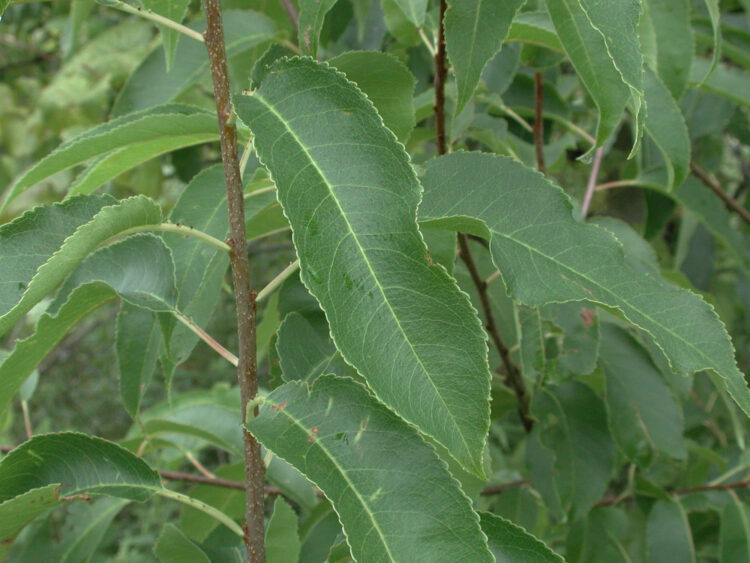
Black cherry leaves are crenate-serrate.
The petioles (leafstalks) bear a few blister-like glands.

black cherry petiolar glands
Flowers and fruits. Cherry flowers are small, white, 5-petaled, and radially symmetric. The inflorescence is a elongate, with stalked flowers (a raceme).

Black cherry flower on June 1, 2005.
The flowers are perigynous, i.e., with a floral cup that surrounds the ovary, and on the rim of which are attached the sepals, petals, and stamens.
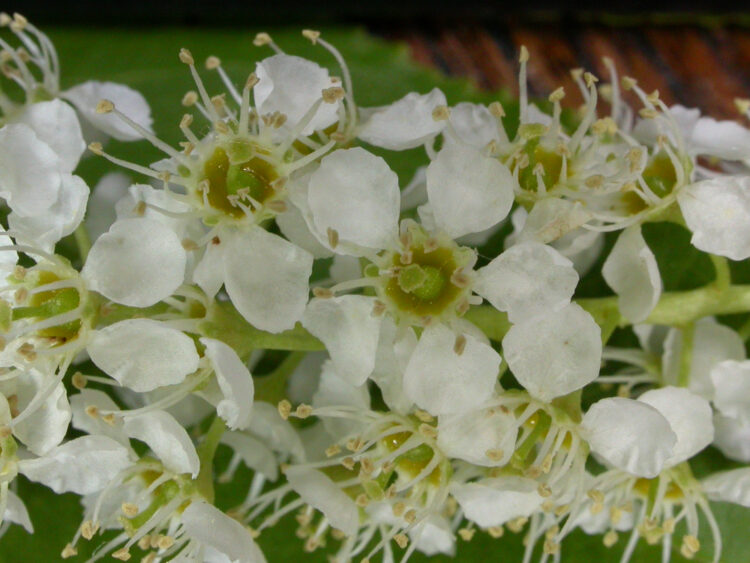
Black cherry flowers are radially symmetric with flower parts in 5’s.
The fruits are drupes–one-seeded fleshy fruits with a hard covering around the seed.
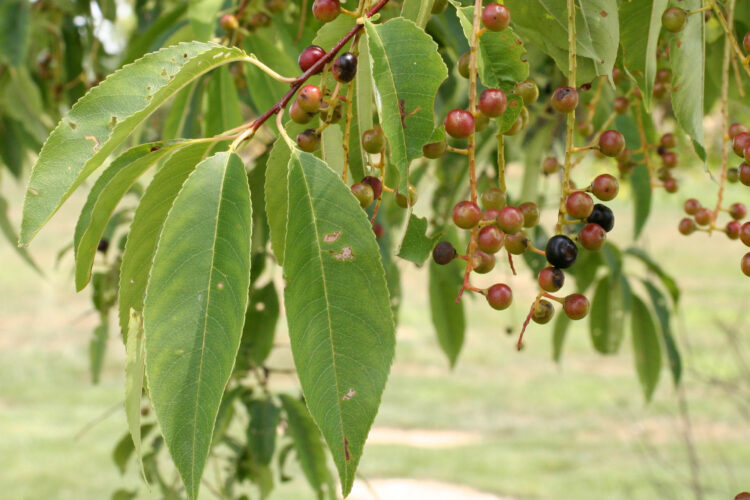
Black cherry fruits are drupes presented in racemes.
Bark. The trunk of a mature black cherry is iconic: burnt potato chips!
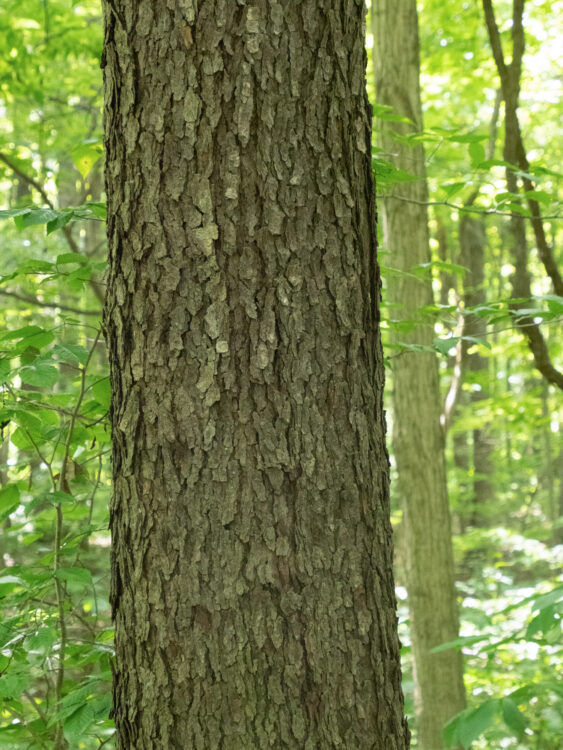
Black cherry bark is rough and black.
In the winter. The twigs have a true terminal bud, somewhat elevated leaf scars, and small but prominent lenticals (breathing pores). When scratched, release an almond aroma.
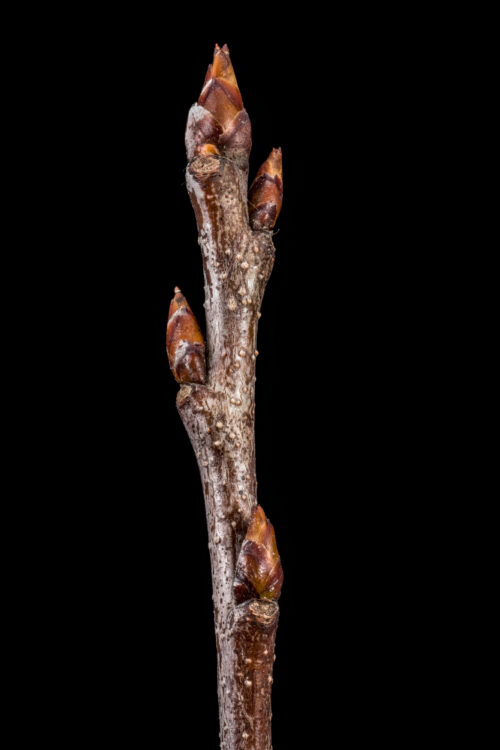
black cherry twig
Where to find black cherry. E. Lucy Braun, in The Woody Plants of Ohio (1961, 1989; The Ohio State University Press) tells us about this species that “Most large specimens have long since been removed from our forests, for wild black cherry is a valuable timber tree whose wood resembles mahogany. Ranges throughout Ohio in mesic woods, second growth woodlands, and scattered along fence-rows; reaches its best development in mesic sites.”
Scanned Image from an Old Book
(Flora of West Virginia, by P.D. Strausbaugh and Earl L. Core)

black cherry
Ooh ooh. I have a question!
Would wilted black cherry leaves be good livestock food and if not, why not?
Heck no! The wilted foliage contains hydrogen cyanide, which inhibits the use of oxygen by cells.
